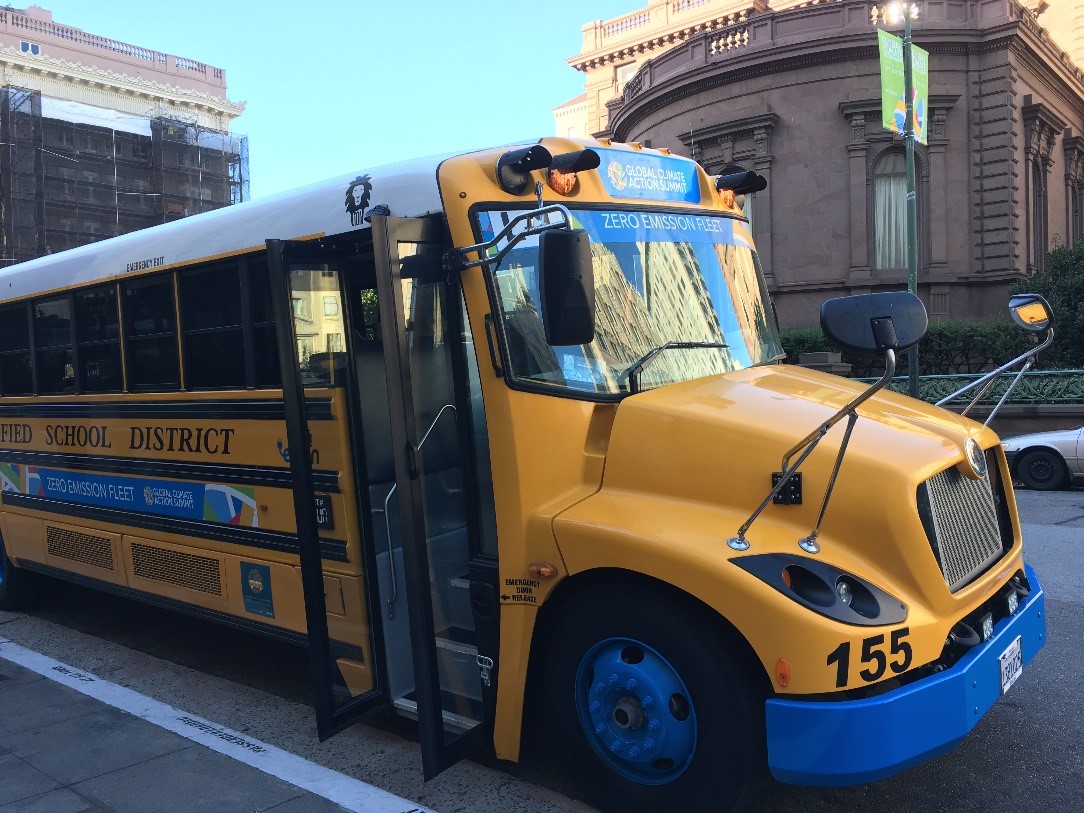
A Zero-Carbon Transportation Revolution Demands Great Urban Places
Swapping out fossil fuel-powered internal combustion engine vehicles for electric ones running on renewable energy might do the “climate work,” but the amount of climate work to be done will be far greater if we continue to design and run our cities on an auto-dependent operating system.
Three revolutions in transportation – electric vehicles, shared mobility and automation – have the potential to slash the amount of energy we use globally for passenger transportation by 70% by 2050, reduce carbon pollution by 80%, and save trillions of dollars in the process, according to a new study by researchers for the Institute for Transportation and Development Policy (ITDP) and the University of California-Davis.
The Three Revolutions in Urban Transportation study is the latest in a mounting body of work (including our own 2016 report, A New Way Forward) demonstrating the transformative potential of emerging transportation technologies and services.
It is also the latest to suggest that obtaining the carbon benefits of those revolutions is not mainly a technological challenge – it’s a public policy challenge. Failing to take this opportunity to modernize transportation and land-use policy creates the risk that we will perpetuate the status quo – or, worse, create a transportation system that is a bigger, badder version of what we already have.
The potential to achieve this fourth revolution – the transport policy revolution – is met with light skepticism by David Roberts of Vox in his review of the study. I want to spend some time with Roberts’ piece – both here and in a subsequent post – because I think it exemplifies a couple of habits of mind that climate advocates need to reexamine as our attention shifts from cleaning up power plants to decarbonizing transportation.
Urbanization Is not a “Wedge”
Roberts goes out of his way in his review to minimize the importance of urbanization as a carbon-reduction tool. I say “goes out of his way” because such skepticism is nowhere apparent in the ITDP/Davis study itself. Indeed, the transformative “Three Revolutions” scenario described in the study “overlays shared mobility and strong policies for urban planning that favor compact cities, walking, cycling, and public transport.” (emphasis added)
The core question is whether reducing growth in vehicle travel is important for achieving a near-zero carbon transportation system. Roberts argues that it isn’t:
If electricity is completely decarbonized by 2050, then electrification will effectively be doing all the climate work. Cars will have a free pass on carbon. … [I]f your primary goal is to reduce transportation carbon emissions, urbanism is not the most impactful strategy. Electrification is, by a wide margin. (emphasis in original)
We’ll come back to the “free pass” comment in a little while. But where Roberts (and frankly, many climate advocates) go wrong, I think, is by characterizing urbanism as just another climate stabilization “wedge.”
Let me backtrack: Wedges theory emerged in the early 2000s as a way to help the public and decision-makers wrap their heads around the steps needed to address global warming.[1] Wedges analysis works by identifying the delta – the “stabilization triangle” – between emissions under a business-as-usual scenario and a desired emissions trajectory, and then selecting from a menu of discrete measures to achieve the emission reductions needed. Stack up enough wedges and you win the game (and save the planet).
Stabilization Wedges (Pacala and Socolow, 2004, see link in footnotes)
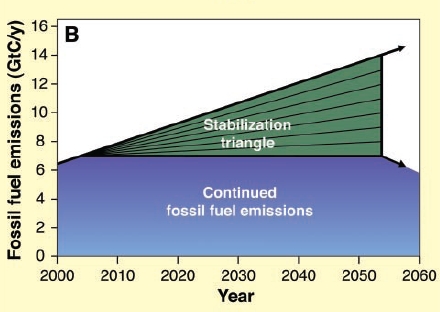
Wedges-style thinking is an excellent tool for understanding and communicating the impacts of certain kinds of climate policies – especially those that result in swapping out dirty or energy-hogging technologies for cleaner, more efficient ones.[2] It values policy approaches that are quantifiable, interact minimally or not at all with other policies, and are rolled out linearly over time.
But wedges-style thinking is not as helpful in assessing other kinds of climate action. It has a hard time dealing with suites of policies that interact in complex ways. It doesn’t deal well with the potential for technological “tipping points” (such as the current tipping point in renewable energy), or the potential impacts of cultural or behavioral changes.
Vehicle electrification makes for an excellent “wedge” – the effects of electrifying the current system are easily quantifiable, vehicle stock turnover can be predicted based on historical experience (though the current turmoil in the vehicle market and the potential for disruptive transitions may make that less true today), and the number of policy prerequisites needed to achieve it are few.
Historically, we have tended to treat urbanization/smart growth as another wedge – a separate and discrete approach to solving the problem of carbon pollution from transportation. If the “climate work” of eliminating transportation sector emissions can be done by electrifying cars and powering them with renewable electricity, there is little left for urbanization to do.
I think that’s the wrong way to understand the situation. Urban form isn’t just another wedge – it is the platform on which the success, failure and cost of most other transportation decarbonization policies (including vehicle electrification) depends.
Think of urban form – the physical layout and shape of our communities – as an operating system, and our transportation systems – our cars, transit systems, etc. – as software.[3] It is often possible to run fancy new software on an outdated OS, but doing so is going to be slow, clunky, frustrating and “buggy.”
It’s similar with transportation. Swapping out fossil fuel-powered internal combustion engine vehicles for electric ones running on renewable energy might do the “climate work,” but the amount of climate work to be done will be far greater if we continue to design and run our cities on an auto-dependent operating system.
The “Three Revolutions” study illustrates this clearly. By 2050, world energy demand for transportation under a scenario that includes shared mobility is less than half that of a “two revolutions” scenario that incorporates only electrification and automation.
Energy Use in Business-as-Usual, Two Revolutions and Three Revolutions Scenarios (ITDP/UC-Davis, 2017)
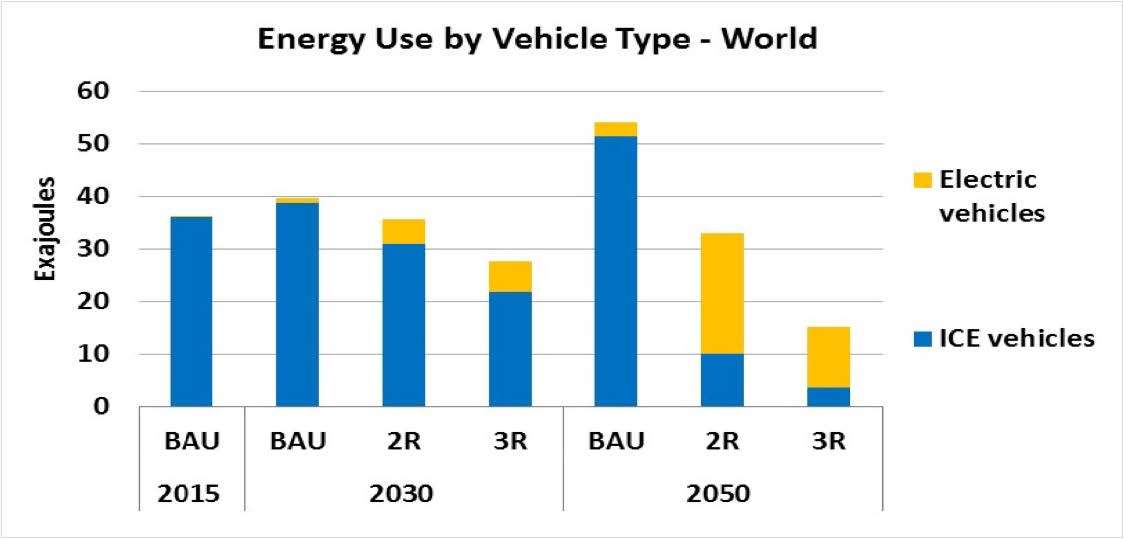
What difference does that make? Halving energy demand means halving the number of wind turbines and solar panels needed to power the transportation system of the future. It means halving the amount of energy needed to build that clean energy infrastructure (this is important, since manufacturing is likely to be among the most difficult sectors to fully decarbonize). It also means roughly halving the number of potential land-use conflicts and other impediments to renewable energy development.
In short, it makes the job of physically converting our transportation system to renewable energy much easier.
Compact urban form has thus far been a key factor in the success of shared mobility – including traditional transit services as well as newer services like carsharing and bikesharing. Concentrate people and destinations in a compact area or along a well-defined corridor and you not only reduce the distance you must travel to carry out your daily tasks, but you also make it easier and less costly to share vehicles and trips. If we want to make shared mobility of any kind work, it is easier to do it in places where people live and work closer together.
Compact urban development is an important climate change strategy in another way as well. Let’s say that the electric vehicle and renewable energy transitions – hopeful and exciting as they are right now – are delayed. Imagine, perhaps, that major industrial countries choose leaders who are beholden to fossil fuel interests and who set out to monkey-wrench the clean energy transition any way they can. Imagine that global oil interests – having seen what’s happened to the coal industry and watching their assets lose value in real time as vehicle electrification takes hold – engage in heavy lobbying and dirty tricks to push off the inevitable as far as possible.
Hard to visualize, I know.
Even if the clean energy transition is delayed, we will always have Paris … and Amsterdam and New York and the many other cities around the globe that have figured out how to build vibrant, livable cities with a small transportation carbon footprint. Using the other tools in our decarbonization toolbox – urbanization among them – to take action now provides an insurance policy in the event that any of the other energy revolutions run into roadblocks.
Lastly, urbanization has impacts that extend beyond transportation. Compact urban form can reduce residential energy consumption and the amount of embodied energy consumed in the construction of roads, buildings and other infrastructure.
Car-dependent land uses and transport systems don’t get a “free pass” on any of these other sources of carbon emissions, all of which can be reduced by smarter community design, nor do they get a free pass on the embodied energy of the vehicles themselves, which can represent a significant portion of their life-cycle carbon impact.
Why Doesn’t Urbanism Get Respect as a Climate Solution?
If we know that urbanism works to reduce carbon pollution from transportation; if we suspect – based on the “Three Revolutions” study and practical experience to date – that it is a prerequisite to the swift rollout of the kinds of shared mobility services that can (with the right policies) accelerate the transition to a zero-carbon transportation future; and if we suspect that there may be spill-over benefits of urbanism that contribute to decarbonization of the residential and industrial sectors – then why is urbanism so often dismissed as a climate solution in the United States?
As someone who has studied and written about transportation and climate change – from both the vehicle technology and demand reduction angles – for nearly 15 years, I’ve thought about this a lot. But I think it boils down to one thing:
Operating system upgrades are a pain in the neck.
While a few people – the fabled “early adopters” – always want to have the newest thing, for most of us, upgrading an operating system is a time-consuming and scary proposition to be put off at nearly any cost. An OS upgrade sometimes means that software we’d become accustomed to will no longer work. New versions of other programs will require us to adjust our habits and behavior. Yes, there are likely to be new features and benefits from a new OS, but many of us will only upgrade under duress – the manufacturer withdraws customer support, new software no longer works on the old system, or the old system becomes vulnerable to new security threats.
The more entrenched you are in your habits, the harder it is to switch.
The U.S. transportation and land-use system is currently running the OS equivalent of Windows 1955. It is deeply entrenched, and anyone who has worked in this field long enough understands just how difficult it is to change. It is no wonder that many climate advocates – with long memories of failed reform efforts in the past – try to find another way around the problem.
But the prospects for a transportation OS upgrade are, in many ways, better than they have been in my lifetime. The substantive case for fundamental reform of transportation and land use is solidifying, the forces capable of winning one are growing in strength, and a series of small victories – especially in leading cities – are demonstrating the potential of what can be achieved.
In my next post, we’ll take a look at some of the reasons for, if not optimism, at least hope, in the quest for a dramatically different vision of transportation and land use in the U.S.
[1] The original Science paper by Stephen Pacala and Robert Socolow that lays out the concept can be found here.
[2] FYI, the original Pacala/Socolow paper included a halving of per-vehicle travel as one of the 15 identified “wedges.”
[3] Yes, I know this is an imperfect metaphor, but please just humor me.
Topics
Authors
Tony Dutzik
Associate Director and Senior Policy Analyst, Frontier Group
Tony Dutzik is associate director and senior policy analyst with Frontier Group. His research and ideas on climate, energy and transportation policy have helped shape public policy debates across the U.S., and have earned coverage in media outlets from the New York Times to National Public Radio. A former journalist, Tony lives and works in Boston.
Find Out More
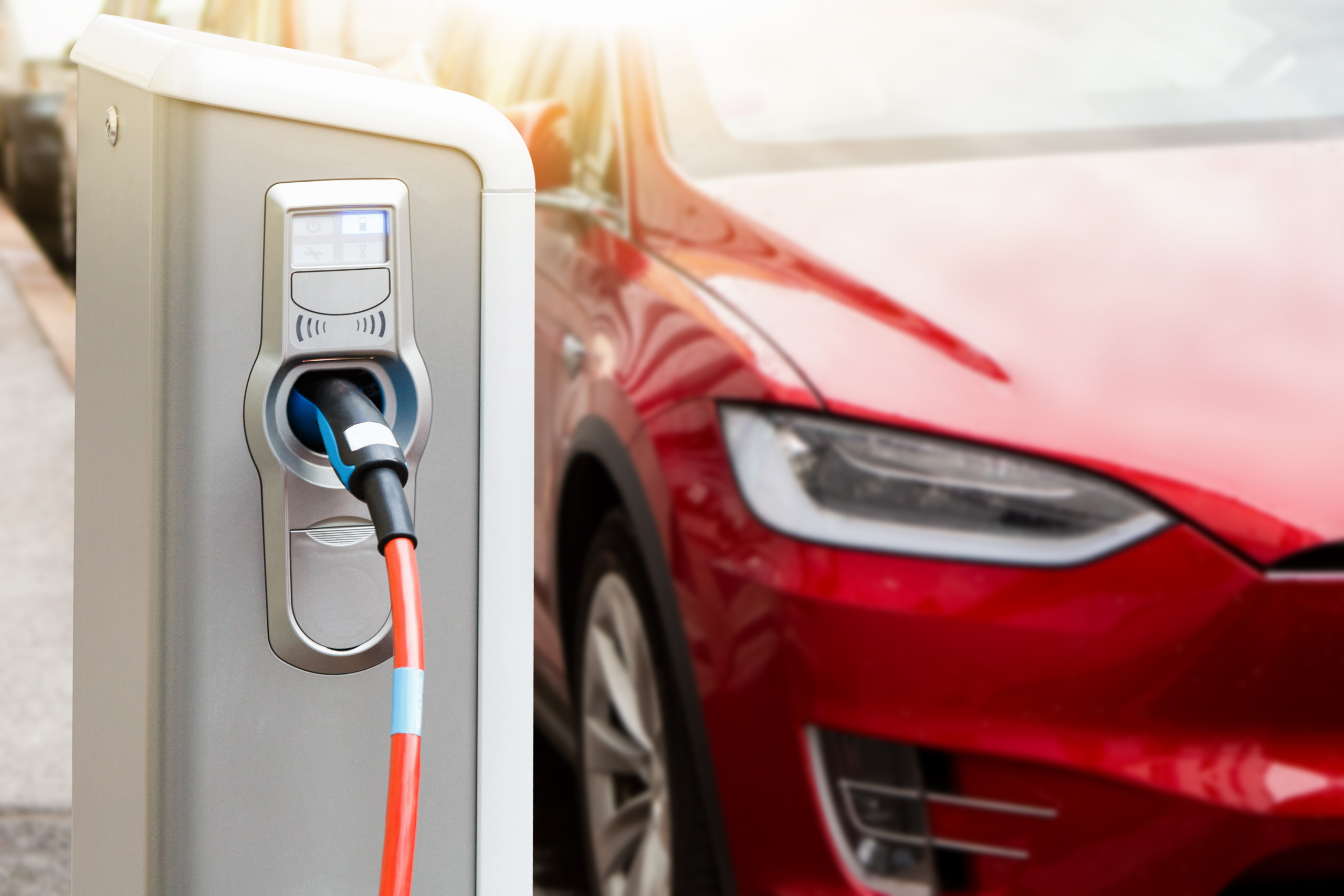
Automakers could have learned to build EVs. They paid Tesla to do it instead.
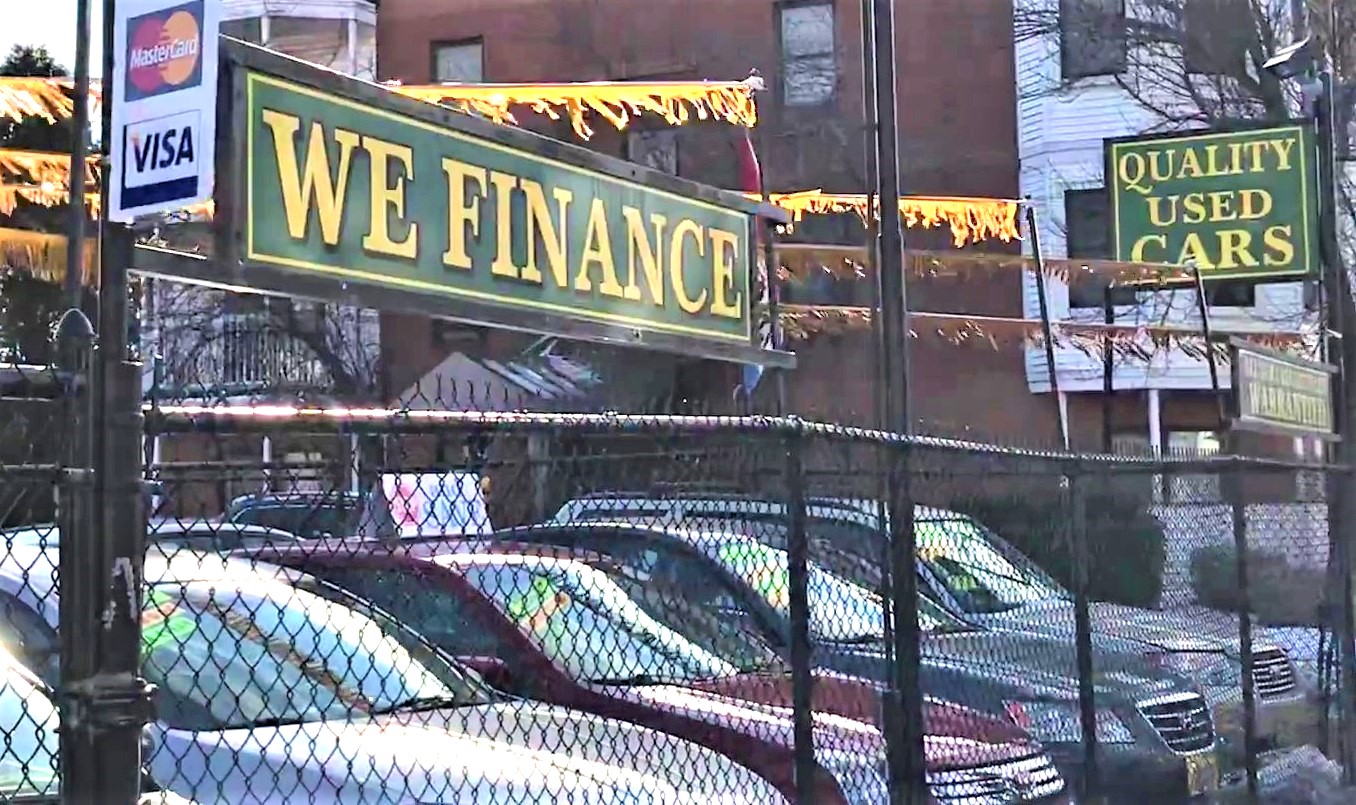
The auto industry has a sustainability problem. And it’s not just about the environment.
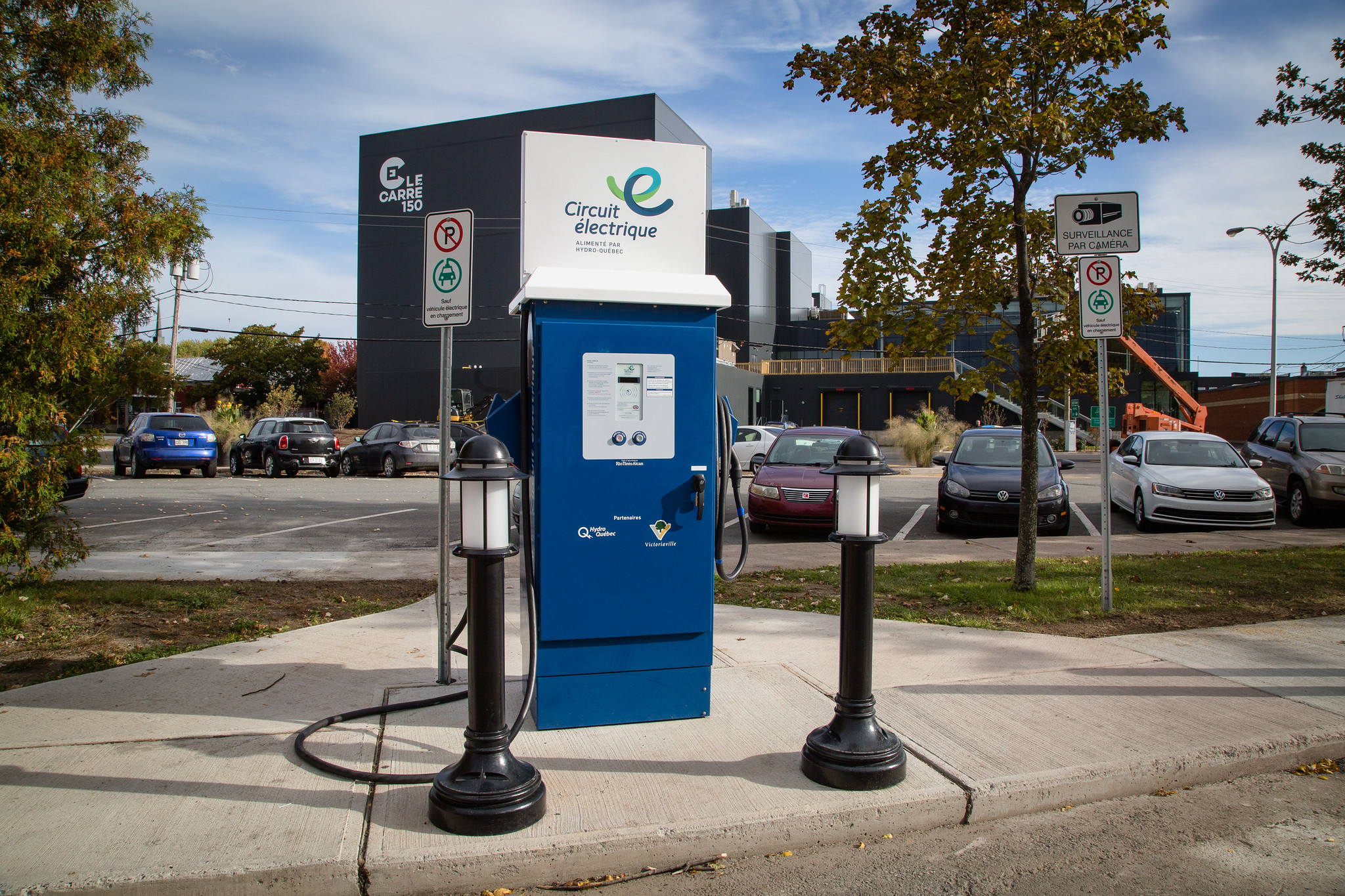
Totally wired: How Quebec became a leader in electric vehicle charging
